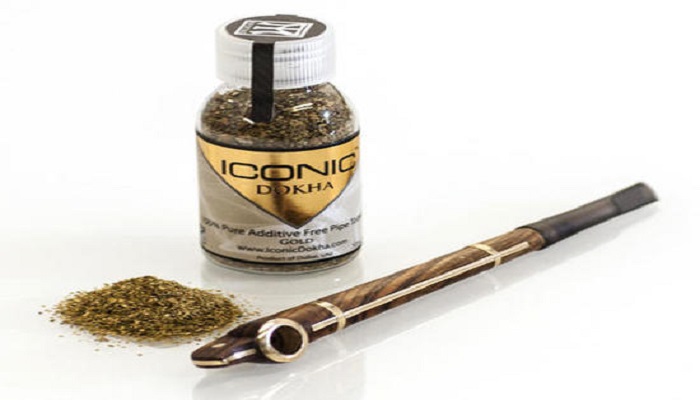
Smoking is a trend that the youth picks up- a trend that begins for the sake of curiosity which later develops into a habit. Here’s about dokha smoking.
Dokha is an Arabian tobacco blend consisting of dried and finely shredded tobacco mixed with leaves, bark, and herbs. The tobacco product is popular in the UAE, Oman, Qatar, Saudi Arabia, Bahrain, Jordon and other Middle Eastern countries.
Dokha is commonly smoked out of an elongated wooden pipe called a midwakh (alternatively spelled ‘medwakh’). The traditional midwakh has no filter, but more recent variations contain a stem-mounted filter to reduce heavy particular matter entering the lungs while smoking.
Dokha and its legality are dictated by the same legislation as tobacco.
Currently among the youth, both in UAE and across the world dokha has become a trend. Health experts have warned against dokha smoking.
“The alarming issue is that we are witnessing a huge increase in the dokha usage for the past seven years. It started to spread through different nations, so it’s not just a UAE issue now, it’s an international epidemic,” said Dr. Mohammed Al Houqani, assistant dean for medical education and consultant of respiratory medicine at the College of Medicine, UAE University.
Dr. Al Houqani added that dokha is the second most used tobacco among the UAE nationals, the first being cigarettes. “Studies indicate there are now more young people smoking dokha, than older people.”
Dr. Al Houqani added that young people believe dokha, the dried tobacco used in medwakh, a smoking pipe of Arabian origin, is less harmful than regular cigarettes. They like the idea of having a couple of puffs and getting the buzz or dizziness effect without generating much smoke and strong smell. Smoke detectors will also most likely not detect one or two puffs in a large room.
He said that the tobacco control law states that no one should sell tobacco products to those who are 18 years old or younger. “However, there are young adults and teens less than 18 years old smoking dokha.”
He added: “The thing that we worry about a lot is that there is no clear packaging for the dokha itself. See the cigarette packaging, it’s all covered by alarming warning labels and you also know the content of it. But there is no warning sign on many of the dokha products, and we don’t know its origin and content.”
He said that the dried tobacco has various processes, known as “hot or cold,” adding that the “hotter” the process, the more “buzz” guaranteed.
Dr Houqani said more research needs to be done on the popular product, to help raise awareness among youth. “We know that there is no good tobacco, all tobacco is harmful and carcinogenic, and we also understand that dokha has different carcinogenic elements. Studies revealed an increase in blood pressure and heart rate, and there are also case reports from Abu Dhabi that showed a link between smoking dokha and seizures.”
Due to a large amount of tobacco inhaled at once or twice by the dokha smoker, large amounts of nicotine immediately enter the blood and affect the heart and the central nervous system.
“In just one second, a dokha smoker is getting a huge amount of nicotine. It is highly addictive and people who try to quit face difficulty.”
He stressed that it is thus imperative to have clear warning labels on all tobacco products.
“Because cigarettes are imported, there is more control over the packaging, but dokha seems to be purchased/imported as raw material and then processed and packaged here in small tobacco shops. The whole process is not well monitored or controlled.”
Dr Houqani urges all tobacco smokers to think twice before taking another puff.
The benefits of quitting smoking are immense. The blood pressure and temperature return to normal within 20 minutes, the nicotine level falls down to an almost normal level within eight hours, the blood oxygen increases to normal in 12 hours and the carbon monoxide drops to normal.

Post Your Comments